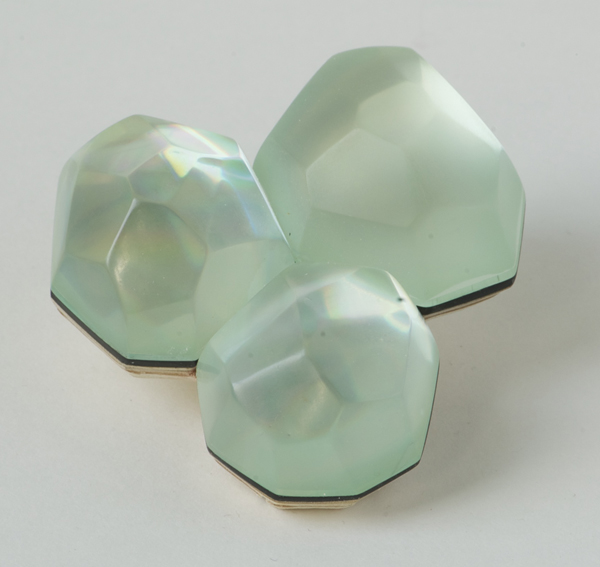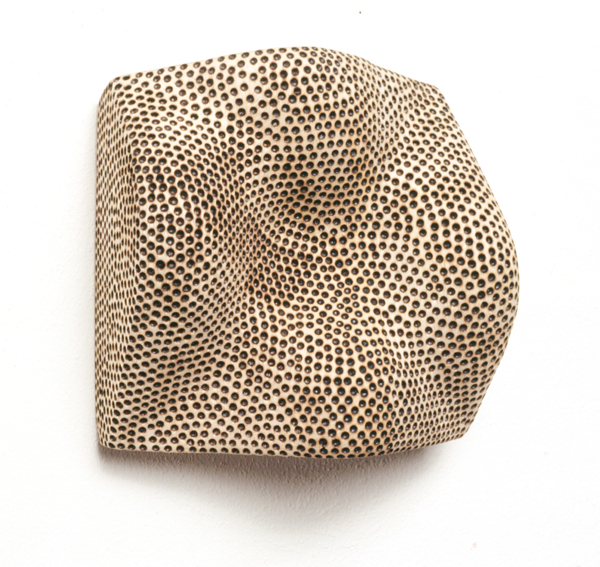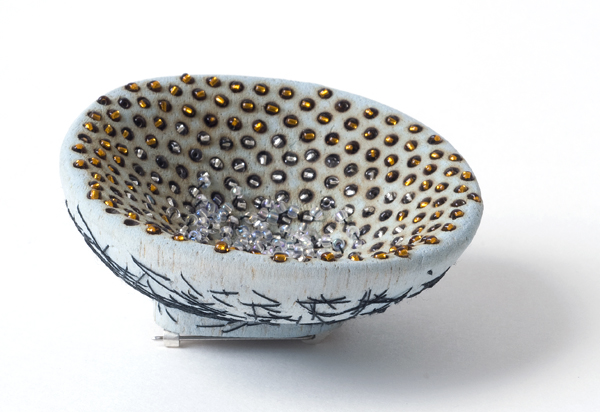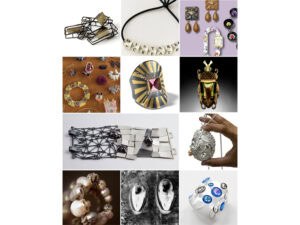
Currently, Thailand is experiencing protests against the government, and I asked Atty Tantivit, the owner of ATTA about it. This is a contrast to this interview, but I thought it was important to note Atty’s response.
“Though corruption is known in Thailand, this is the first time that the people have taken it to centerstage and marched against it, including the corrupted government. The situation is mostly peaceful. There have been some incidents of violence against the protesters by “unknown” attackers, and so far there are about 10 casualties. The protesters occupied the central part of Bangkok. Unless they march the streets asking for support along various roads in Bangkok, we at ATTA Gallery do not feel any disruption.
Pray for us. We need your understanding and support. We are fun- loving, peaceful people. But, when there’s a need for us to fight for what is right, we will not stop short of it. I continue to open the gallery as I think that I owe it to the artists to present their work to the best of my ability. I also think that, at time like this, we could use art to heal our souls. What we have at ATTA Gallery could give people a bit of an uplifted feeling during this tough time.” Atty Tantivit
Our best wishes go with you Atty.

Beppe Kessler: This is a crucial question with a long and a short answer.
I can say it just happened by accident.
And the long answer:
Until 2000, I worked as an industrial textile designer for printed textiles and was teaching in the textile department at different academies in the Netherlands. Those two activities made me financially independent in my jewelry and paintings/drawings.
During my academy time, I was always more attracted by drawing and painting. I hated weaving, although I had a strong sensitivity for materials. So, it was good that I chose the textile department. The 80s were also the years of what I call the democratization of jewelry—all kinds of experimental materials were allowed and appreciated, and the use of gold was not done.
During my time at the academy, I made little things from rubber bands, so it was a small step after my graduation to produce my first piece of jewelry, the round-weave bracelet. And of course, I visited Galerie Ra as a student and was inspired by the work of Otto Künzli, who also made a humorous and rather minimal design with rubber bands at that time. And the Stedelijk Museum bought my bracelet in 1983. A funny story is that the same bracelet, made with golden rubber, was refused for the exhibition Jewelry Redefined in London because of the gold! They chose another bracelet made of nylon nettings.
After these first pieces, I felt the challenge to think about other pieces of jewelry in other materials and techniques. At first, it was textiles, and later a large variety of different materials. Since 1986, I have tried to integrate painting and jewelry. So far, I have covered the jewelry part.
The turning point from textiles came as I was working on an art commission for a big unique carpet for a room in the government building in The Hague. I worked three intense years on it. Although I am proud of the textiles that were produced earlier, it did not give me enough artistic freedom. So, I donated all my textile work to the Dutch Textile Museum (and got a retrospective exhibition in 2003). You could also say that I was not commercial enough or passionate enough to go on. I wanted to work more intensely in painting and jewelry and even to combine those two mediums. But, there is always a lack of time.
Concerning the paintings—although not many people know this, immediately after graduating from the academy, I started to make drawings and exhibit my work, and that has never stopped. They got less attention in the art world than my jewelry, but that doesn’t mean that they are any less important. On the contrary, the roots of my jewelry are in my painting or come up when I am painting. In a way, I am still close to my textile background in both jewelry and painting. And, I have decided not to choose between jewelry and painting.

Beppe Kessler: In fact, I use all materials that are soft enough to attack with my hands and machines: a power file, a saw-machine, and a little multitasking Dremel machine for drilling, polishing, and sculpting. I am a material girl, so I use all kinds of wood, the soft balsa wood, acrylic fiber, cork, felt, anthracite, coal, bone, ivory, aluminum, alabaster, soapstone, gypsum, resin, rubber, and still I find so many other inspiring materials. Even more important than the material itself is how I use it and force it into my handwriting. I push materials to their limits and even further until they break.
I, of course, have to use metals, such as brass, gold, and silver, but I glue the metal to the material to make the brooches. And in a way, they are functional lines for me integrate into the composition of the piece. I cannot solder and do not want to learn because it is a challenge to make jewelry without soldering. Limitations are also my strength.
You describe your work as little sculptures and not bound by jewelry traditions but using your own rules. What are the dos and don’ts?
Beppe Kessler: In a way, it is a freedom not to be educated as a jeweler, although it sometimes costs me a lot of extra time, but it also leads me to other ways. (I also still learn things from students who do apprenticeships with me, and I do integrate that in my work.) Because I have no jewelry skills, I have to solve problems differently. Sometimes it is too easy to read the technique of a piece, and it looses its mystery. For me, the most interesting works are those that are so independent that you do not ask anymore how they are made. They just are.
Techniques can be a gift and a pitfall. I am interested in questions instead of answers. What is perfection? I am looking for the junction of imperfection and perfection. Why not scratching instead of polishing? Why can’t the back be the front? Mistakes are inspiring because, after all, what is a mistake? For me, techniques are tools or like learning to speak words in another language. But making jewelry is like writing a poem. It is more than speaking. It means that you let the words dance.
Are both jewelry and sculpture bound by traditions?
Beppe Kessler: Of course, they are both bound by traditions. And it is also inspiring to know these. But, the most thrilling way to work is to go off the well-worn path, to cross rivers, to pass borders, and to overcome your own limitations, to surprise yourself. And there always will be a next step, a further one.

Beppe Kessler: Sometimes the thoughts are there before I start. I am thoughtful and philosophical, but I am not a conceptual thinker. Sometimes the thoughts only become clear during the process. And sometimes the title emerges and reflects in one word what I wanted to express.
The feelings and emotions are always there before I start to work. I get an urge to close the door and start to work with an intention to create something in a vague direction. Something starts me off. It could be a word, a sentence, an abstraction, or a concept like time or wind or (now) room.
I think with my hands. In fact, there is more intelligence in the hands than in the brain. I don’t think with my brain but go down to my hands. I have to carefully watch what happens in my hands and stop at the right moment.
It sounds like magic, but it is a struggle with lots of material sketches and rubbish until you find that fascinating beginning of a treasure. In the beginning, I create chaos.
Why did you name the show at Atta Gallery Whispering Pieces?
Beppe Kessler: As I said, I am not working as a conceptual artist. I do not want to use a lot of words to explain the “whys” and “whats.” But, my work has something to say. I prefer to say it softly with a poetry of materials, and therefore wordlessly. In the title, I give the piece a little push. I hope the work itself communicates. Whispering is exactly the right word to express what I hope my pieces will do. A whisper is so much more impressive than shouting. But you have to listen! For this exhibition, I made a group of small, light pieces, and so for them Whispering is a good title.
Could you describe the ideas behind the groupings that are part of the show called Every Day and Plenty of Nothing?
Beppe Kessler: Every day pieces are inspired by an old tradition in Buddhism that each day has its own color. If you wear the right color on the right day, it brings happiness. The day on which you are born is your color. (Everywhere in Thailand you see yellow and light blue to honor King Bhumibol and Queen Sirikit. They were born on a Monday and a Friday.)
I wanted to make simple, colorful, light, and affordable pieces for everybody, for every day. They are made of burnt and painted balsa wood in combination with colored acrylic fiber and sometimes other materials.
Plenty of nothing is an inspired contradiction. This series of five small empty plates or cups are full of burned holes. Empty and full, what is in a name?
What you see are empty spaces, sometimes filled with transparent glass beads or glittering Swarovski crystals. Holes are empty spaces, nothing in them but air, plenty of air. It is a nice idea that I can shape something called “nothing” into a piece of jewelry. Knowing that this “nothing” is essential.
And now you seduced me to use words for something that should be kept quiet.

Beppe Kessler: No, but I am here now. This is my first visit, but it surely won’t be the last. It has been very inspiring. Working together with Atty Tantivit was a big pleasure, and the opening with the Dutch ambassador was great.
What qualities make a piece of jewelry successful?
Beppe Kessler: What kind of success? There are so many different forms of successful. Commercial success? Success of being published many times or an eye-catcher? Being remarkable because of the material, the title, a prize?
For me, the technique of a good piece is not too easy to read. It should have some mystery, something that you do not see in one look. The most interesting works are those that are so independent that you do not think to ask how they are made. They are personalities. Tactility and the materials are important. The junction of imperfection and perfection is important as well. The piece should communicate something. That could just be beauty, but it also can refer to some content. For me, a piece should be an interesting object, too. The third dimension is always there.
Sometimes, the wearer adds something unexpected to the piece. There grows a liaison between the piece and the person, and that is the best thing that can happen.
Can you recommend any books on jewelry that you have found particularly stimulating?
Beppe Kessler: The best thing is to see pieces physically, in person at an exhibition. Books do not tell me enough about the tactility and materiality. Very old jewelry, such as Etruscan and seventeenth-century pieces, is both inspiring and untouchable.
The works of Giuseppe Penone, Robert Ryman, and Tony Cragg inspire me, although they aren’t jewelry. And I have warm feelings for the work of Robert Smit and Otto Künzli.
Thank you.





